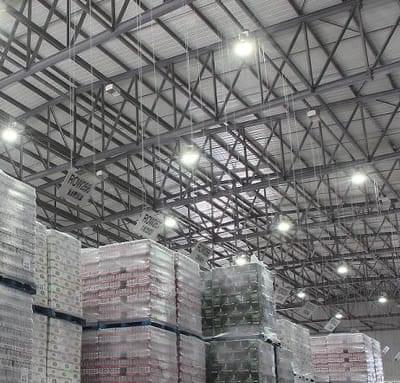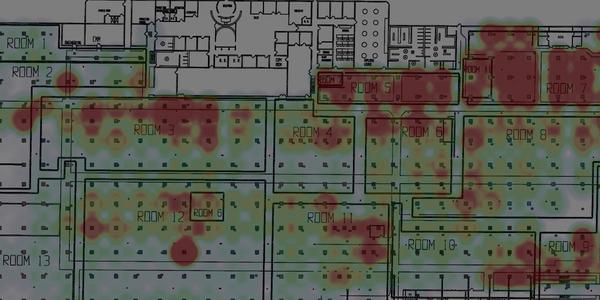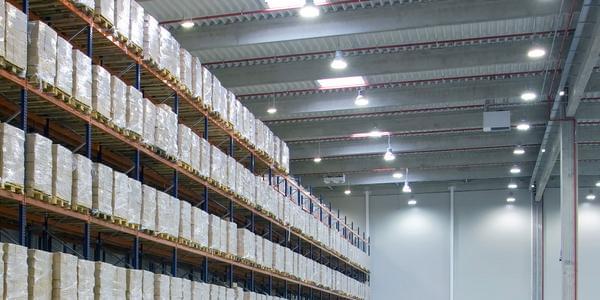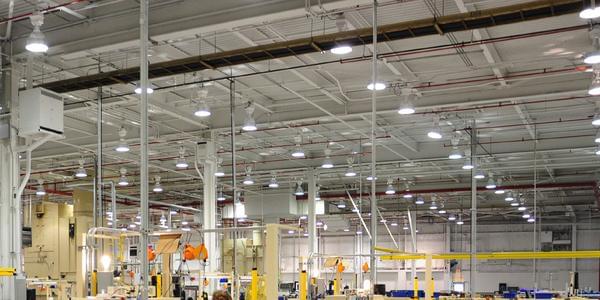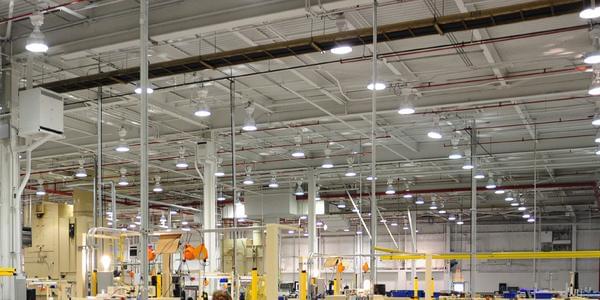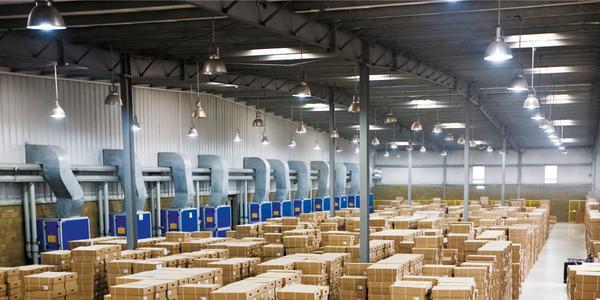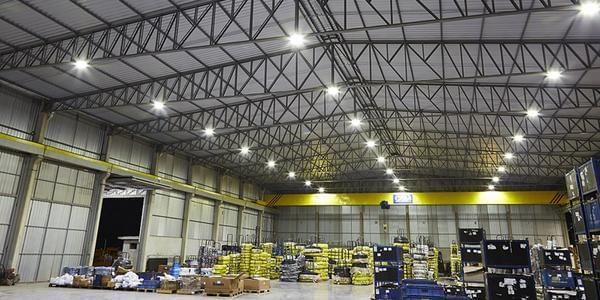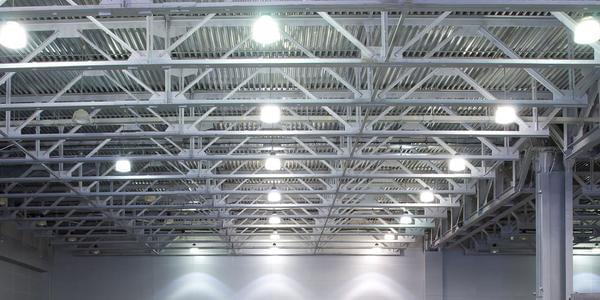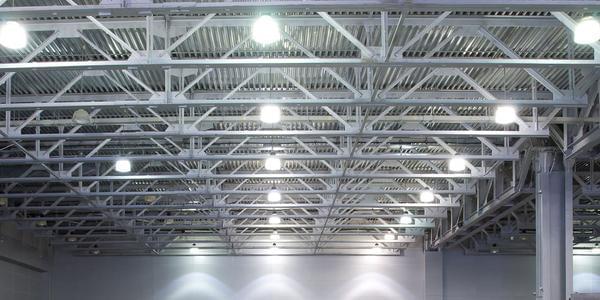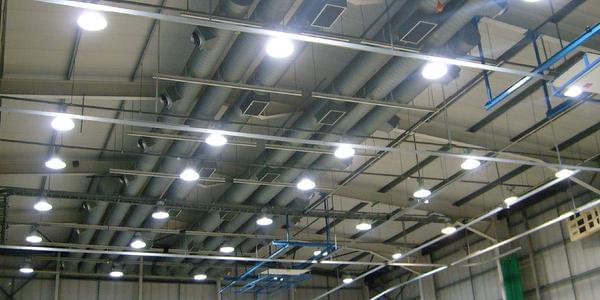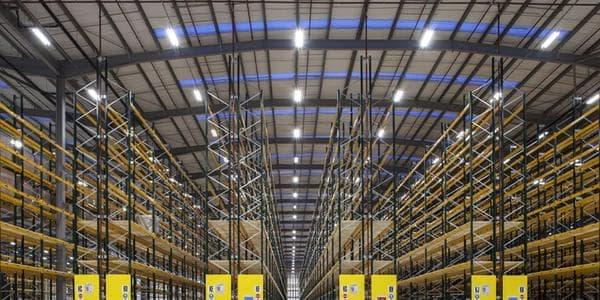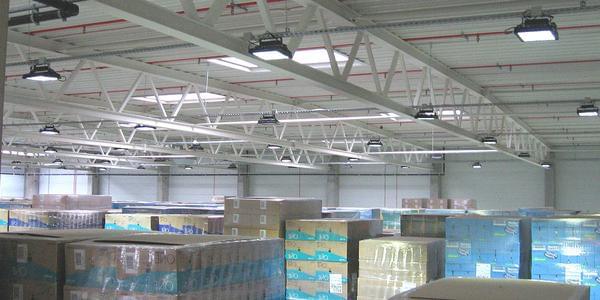Introduction to our Lux, Lumens & Watts Guide
Here at Green Business Light, we must ensure that our energy efficient industrial and commercial lighting installations provide the necessary illumination levels for an end-client's building (such as a warehouse or factory).
The specified illumination or brightness levels of lighting required to be achieved by a lighting installer is usually expressed as an amount of 'lux', for example 150 or 400 lux, but what does this actually mean?
Definition of Lux
Lux is a standardised unit of measurement of light level intensity, which is commonly referred to as "illuminance" or "illumination".
So what is exactly 1 lux?
A measurement of 1 lux is equal to the illumination of a one metre square surface that is one metre away from a single candle.
The diagram below helps to visualise this more easily.

To place the amount of 1 lux into context, examples of the wide ranging lux of a natural ambient light conditions are given in the table below:
| Natural Light Condition | Typical Lux |
|---|---|
| Direct Sunlight | 32,000 to 100,000 |
| Ambient Daylight | 10,000 to 25,000 |
| Overcast Daylight | 1000 |
| Sunset & Sunrise | 400 |
| Moonlight (Full moon) | 1 |
| Night (No moon) | < 0.01 |
Sunlight provides between many thousand of lux to only a few hundred depending on the weather conditions & time of day. The lux of artificial indoor lighting, however, is typically 1000 lux or below, as can be seen in the following commercial lighting installation examples:
| Environment | Typical Lux |
|---|---|
| Hospital Theatre | 1,000 |
| Supermarket, Sports Hall | 750 |
| Factory, Workshop | 750 |
| Office, Show Rooms, Laboratories, Kitchens | 500 |
| Warehouse Loading Bays | 300 to 400 |
| School Classroom, University Lecture Hall | 250 |
| Lobbies, Public Corridors, Stairwells | 200 |
| Warehouse Aisles | 100 to 200 |
| Homes, Theatres | 150 |
| Family Living Room | 50 |
For commercial & industrial environments where specialised tasks are performed e.g. professional indoor sport, detailed drawing or mechanical work, prolonged small size & low contrast visual work etc., this can require illumination levels from 1,500 all the way up to 20,000 lux in extreme cases.
The lighting output of a light fitting is typically reported as a lumens output - the intensity of light on a surface (the lux) is dependent on the intensity of the light source (i.e. its lumens output) and the desired surface area to be lit.
Definition of Lighting Lumens
The lumen is a standardised unit of measurement of the total "amount" of light packets (or quanta if you want to get technical!) that is produced by the light source - such as a lamp, tube or LED chip. This total measured light may also be referred to by commercial or industrial lighting engineers as "luminous flux".
Some examples of total lumens output (as measured in lumens) from common commercial & industrial light sources are given below:
| Light Fixture | Lumens | Example Uses |
|---|---|---|
| 400W Metal Halide lamp | 38,000 | high bay factory lighting or warehouse lighting lighting installations |
| 200W LED array in a high bay fitting | 20,000 | energy efficient replacement for 400W metal halide and sodium high bays |
| 150W High pressure sodium bulb | 12,000 | street/outdoor area lighting |
| 100W Incandescent bulb | 1,700 | general domestic & task lighting applications |
| 32W T5 or T8 Fluorescent tube | 1,600 | office ceiling lighting panel installations |
* Please note that these are sample figures for example purposes only & the actual output can vary.
Relationship between Lumens & Lux
One lux (1 lux) is defined as being equivalent to one lumen spread over an area of one square metre. To put it another way:
A specification in lux tells you how many Lumens (total light output) you need given the measured area you are trying to illuminate.
So 1,000 lumens, concentrated into an area of one square metre, lights up that square metre with an illuminance level of 1000 lux. The same 1,000 Lumens, spread out over ten square metres, produces an illuminance level of only 100 Lux.
Lighting larger areas to the same necessary lux levels will requires a larger measured level of lumens – this is usually achieved by increasing the number of light fixtures (and hence the power consumed). Bigger commercial & industrial buildings (such as factories and warehouses) have large open spaces so a large number of high power light fittings ('high bay' and 'low bay' types)are generally required.
Efficacy: the relationship between Lumens & Watts
The power required to operate an installed light fitting (or luminaire) is measured as a rated Wattage (Watts being Joules of energy per second). The rated wattage of a light source refers to the entire power consumed in creating the light Lumens and includes the:
- Energy required in creating "visible" light emitted from the lamp
- Heat output generated (including the infra-red part of the lighting spectrum)
- Other parasitic power losses (such as inefficiencies of the control gear/ballast) of the light fixture
A light engineering term exists for the measurement of the rate at which a lamp is able to convert electrical power (Watts) to Light (Lumens) – this is referred to as luminous efficacy (or just efficacy) – and is expressed in Lumens per watt (LPW) or Lumens per circuit Watt
The Luminous Efficacy is a measure of how efficiently a light source produces visible light.
Some examples of luminous efficacy in common commercial & industrial light sources are given below (Please note that these only refer to the light sources and not the light fitting):
| Lighting Fixture | Lumens/ Watt | Typical Uses |
|---|---|---|
| 200W LED array in a LED high bay fitting | 100 | an energy efficient replacement for 400W metal halide and sodium high bays |
| 400W Metal Halide lamp | 90-95 | high bay fittings - factory lighting & warehouse lighting |
| 150W high pressure sodium bulb | 80 | street lighting |
| 32W T5 or T8 Fluorescent tube | 50 | general office ceiling lighting installation |
| 100W Incandescent bulb | 17 | general task lighting applications |
NOTE: All of the measurements above relate to installed light sources which are new and have not dropped in efficiency - the gradual decay of lighting levels must be taken into account when performing lux calculations prior to light system installation in commercial buildings such as warehouses, factories etc. - find out more details below.
The "Real" Lumen Output of Lamps and Light Fittings
Up to now this article has covered the technical definitions of Lux, Lumens & Watts but this is only part of the necessary understanding.
In the specification of lighting for real-world industrial & commercial applications (such as a factory or warehouse) it cannot be assumed that:
- 100% of the lamp output will be emitted from the fitting over its useful lifetime
- The light output will be constant over its useful lifetime.
To assist with further understanding - the concepts of 'Light Output Ratio' and 'Lumen Depreciation' are explained further below.
The Light Output Ratio of a Commercial Light Fitting
The actual total illumination levels provided by an installed light fitting (such as one installed in a factory or warehouse will be critically dependent on the Light Output Ratio:
The Light Output Ratio is the ratio of the total amount of measured lumen output of a light fitting (containing a lamp) to that of just the lamp in isolation.
By way of an example - take an industrial or warehouse high bay light fitting with a LOR of 70%: this indicates that 30% of the lamp's light output is lost due to the design of the fitting
The light output ratio is required in commercial lighting installation because when a lamp is positioned in a light fitting (such as an industrial 400W metal halide high bay) losses of light occur within the fitting itself.
Usually light needs to be directed towards the working area (e.g. - downwards from roof to floor), however, light radiates from lamps and bulbs in all directions (upwards, sideways etc.)
The use of highly polished aluminium reflectors will redirect most of the light downwards - however a proportion will always be 'trapped' in the fitting (and ultimately lost as heat). Its worth noting that directional light sources (such as LED chips in a commercial LED high bay light) do not suffer from this problem to the same extent - here light is emitted as a beam in a singular direction - therefore the LOR will typically be higher for LEDs.
Lumen Loss from Pre-Installed Commercial Light Fittings
The LOR of a light fitting will also be affected over time as debris &/or dust builds up on reflectors, as well as protective covers in the case of fittings with an 'IP' rating. This will particularly be the case in industrial & factory buildings which have many different processes (.e.g chemical, manufacturing etc.) being undertaken.
Lumen Loss from Lamps & Light Sources
Lumen depreciation refers to the process of gradual decline in light output that is observed from most light sources over time. This includes (but is not limited to):
- Gradual light filament/electrode deterioration
- Blackening/discolouration of the lamp surface
In other words:
LED lighting modules do not die instantly like most conventional light sources do - they slowly dim until the lumens output is no longer acceptable.
It should, however, be noted that lower cost high power LEDs (such as those required for large industrial buildings such as a factory or warehouse ) can suffer a rapid initial loss of lumens, rapidly reducing the lighting lux to below the intended lighting lux requirements in only a short time. Although the loss of light may initially pass unnoticed by the building users (some light after-all is being produce), the light fittings have essentially failed & should be replaced.
Both Light Output Ratio and Lumen Depreciation must be taken into account when calculating the required number of light fittings to maintain a desired lux levels for a warehouse or industrial setting over the lamps intended lifetime.
